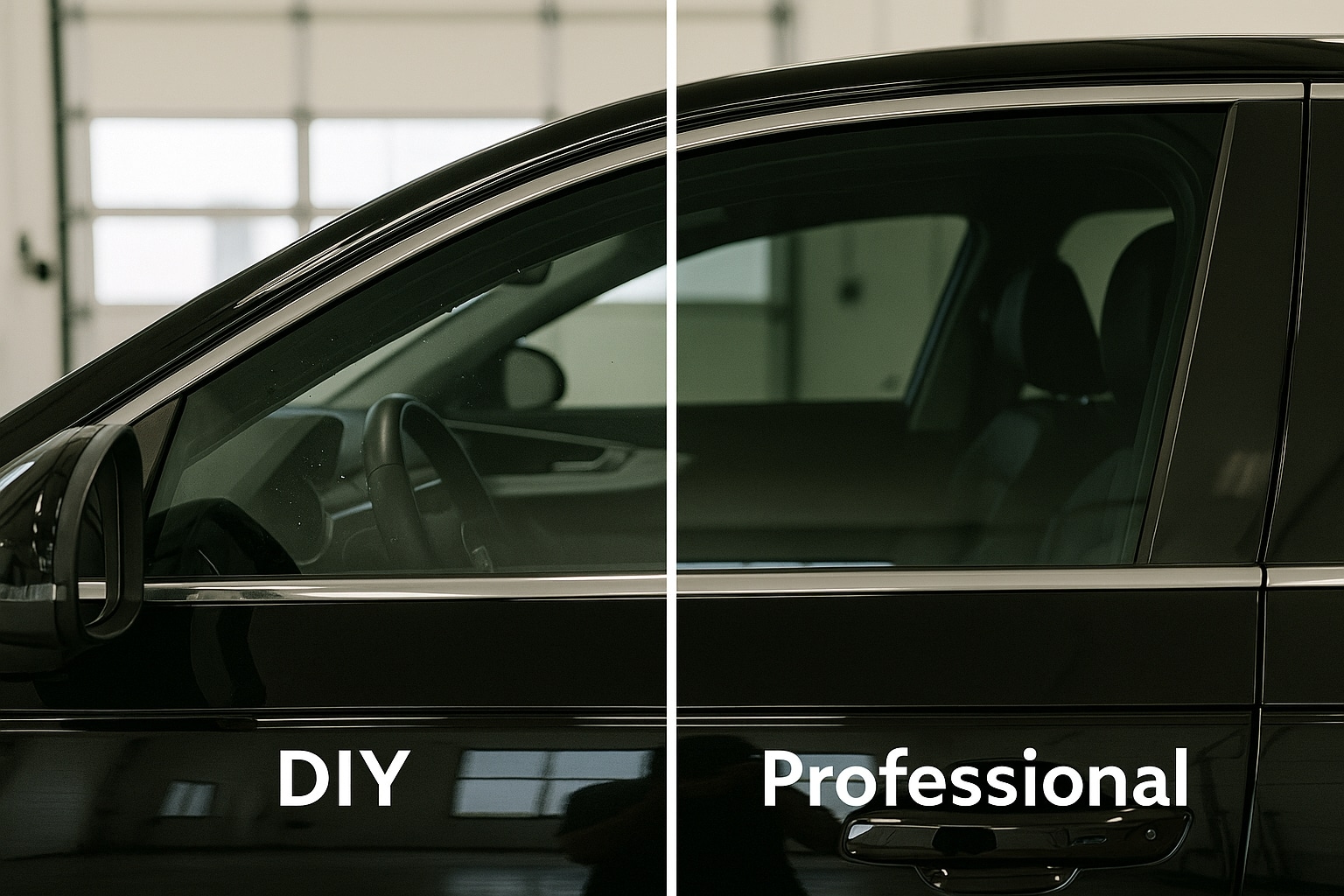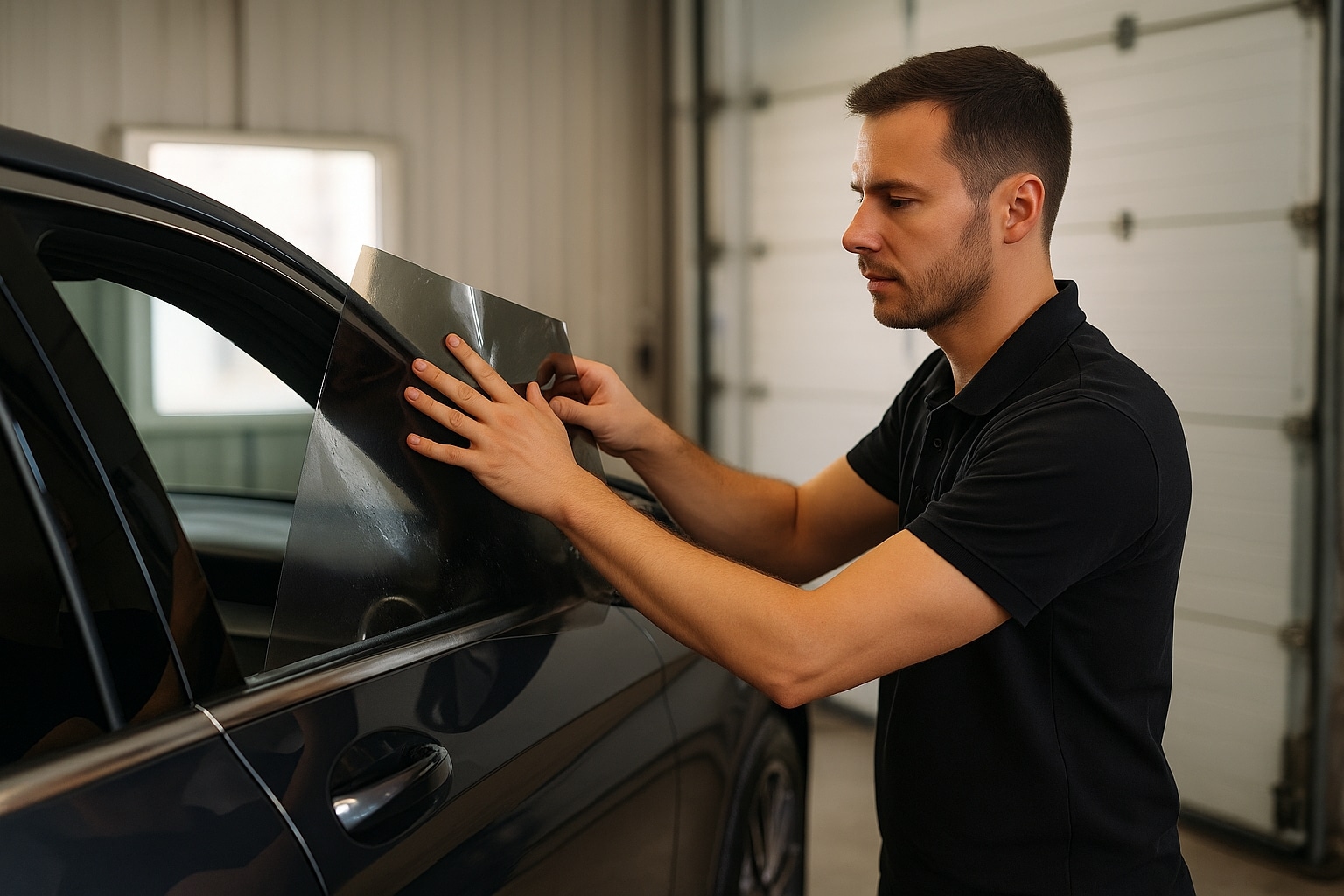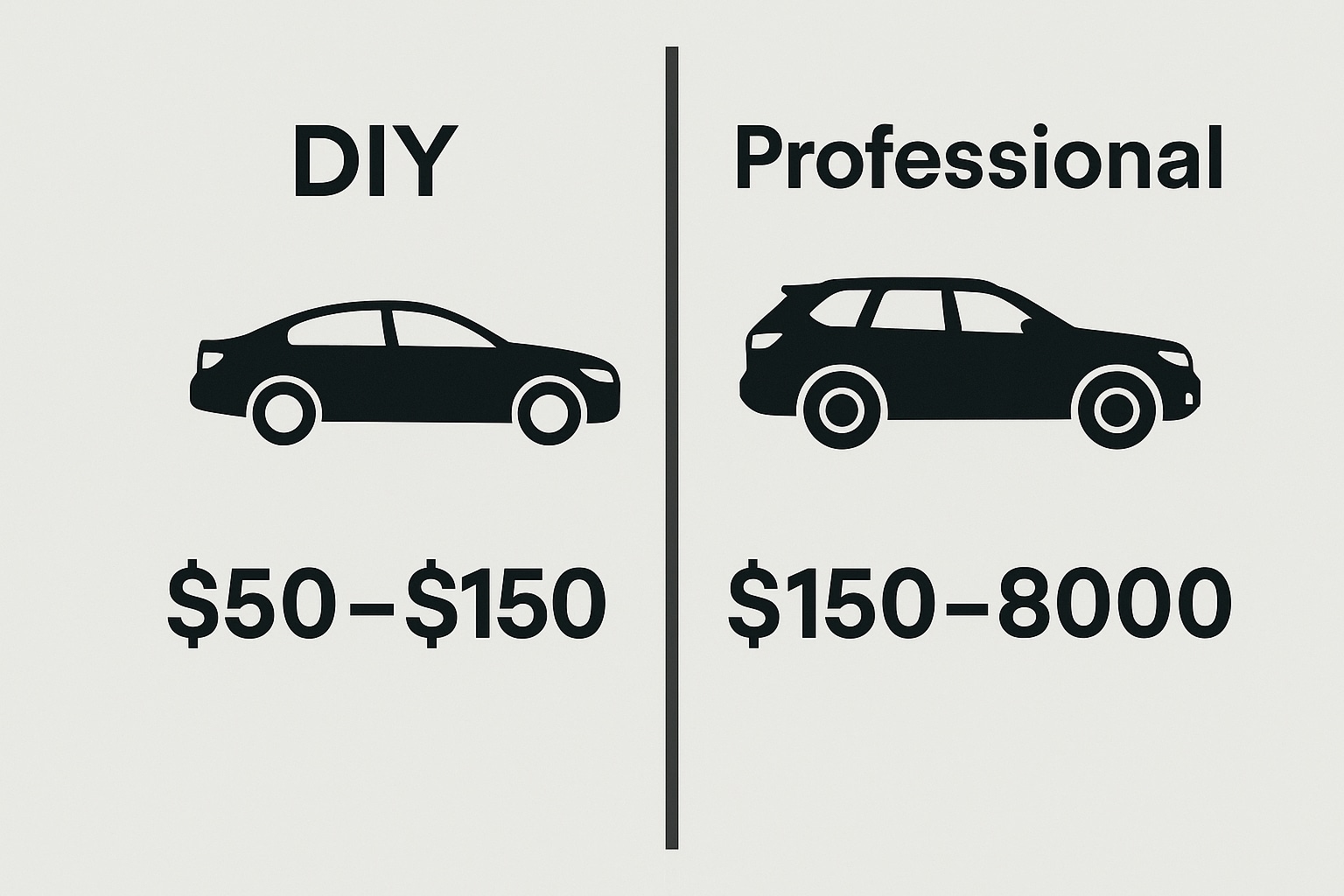Introduction: Why Tint Your Car Windows?
Car window tinting is one of the most popular upgrades for vehicle owners in San Diego and across Southern California. Not only does it give your car a sleek, stylish look, but it also blocks harmful UV rays, reduces interior heat, and adds privacy. But here’s the big question—should you go the DIY route or hire a professional installer? The answer often comes down to cost and results. This guide compares both options so you can decide which fits your needs and budget best.

The DIY Approach: What It Costs
DIY window tint kits are widely available online or at auto parts stores. Here’s what to expect:
- DIY Kit Price Range: $20–$100 depending on quality and brand.
- Additional Tools Needed: squeegee, heat gun, utility knife, and cleaning supplies ($30–$60 if not already owned).
- Time Investment: 3–6 hours for beginners, depending on car size and experience level.
Total DIY Cost: Roughly $50–$150.
For budget-conscious San Diego car owners, this seems like a steal. However, the results heavily depend on your skill and patience.
Professional Installation: What It Costs
Professional tinting is more expensive, but comes with several advantages. Costs vary based on tint type and shop reputation:
- Standard Dyed Film: $150–$250 for most sedans.
- Carbon or Hybrid Film: $250–$400.
- Ceramic or Premium Film: $400–$800, offering the best heat rejection and durability.
Total Professional Cost: $150–$800 depending on film and vehicle.
In San Diego, many shops also offer lifetime warranties, free touch-ups, and guaranteed compliance with California’s tint laws—something DIY installers must research on their own.

Comparing Results: DIY vs Professional
Cost isn’t the only factor—results matter. Here’s how the two options stack up:
- Appearance: DIY jobs can leave bubbles, creases, or uneven edges. Professionals deliver a flawless, factory-like finish.
- Durability: Cheap DIY films may fade in 2–4 years. Professional ceramic films often last 10+ years.
- UV & Heat Rejection: Higher-grade films installed by pros block up to 99% of UV rays and keep interiors significantly cooler.
- Resale Value: Professional tinting can enhance a car’s resale value, while poorly applied DIY tint can actually hurt it.
Legal Considerations in California
In California, window tint laws are strict and enforced. For example:
- Front Side Windows: Must allow at least 70% of light in.
- Rear Windows & Back Windshield: Darker tints allowed, but must have side mirrors.
- Medical Exemptions: Special permissions may be granted.
Professional shops in San Diego know these laws well and ensure compliance, while DIY installers risk costly fines if they don’t research regulations.

Long-Term Value: Which is Better?
If your main concern is immediate savings, DIY tinting might work. But if you care about quality, legal compliance, and long-term durability, professional installation is the smarter choice.
Think of it like this:
- DIY is short-term savings with higher risk.
- Professional is long-term value with guaranteed results.
For Southern California drivers who spend a lot of time in the sun, investing in professional ceramic film often pays off in lower cooling costs and longer-lasting comfort.
Making the Right Choice for Your Car
Both options have their place. DIY tinting is best for hobbyists with patience, smaller budgets, and older vehicles. Professional installation is ideal for new cars, luxury models, or anyone who values quality and peace of mind.
Ultimately, the cost to tint car windows should be weighed against the long-term benefits of UV protection, comfort, and resale value. Whether you roll up your sleeves or call a trusted San Diego installer, tinting is an upgrade that makes driving cooler, safer, and more enjoyable.
Conclusion
Car window tinting is more than just a cosmetic upgrade—it’s a practical investment in comfort, health, and style. While DIY kits are affordable, they come with risks and a learning curve. Professional tinting costs more upfront but delivers lasting quality, compliance, and warranties. The right choice depends on your budget, skill level, and long-term goals for your vehicle.

